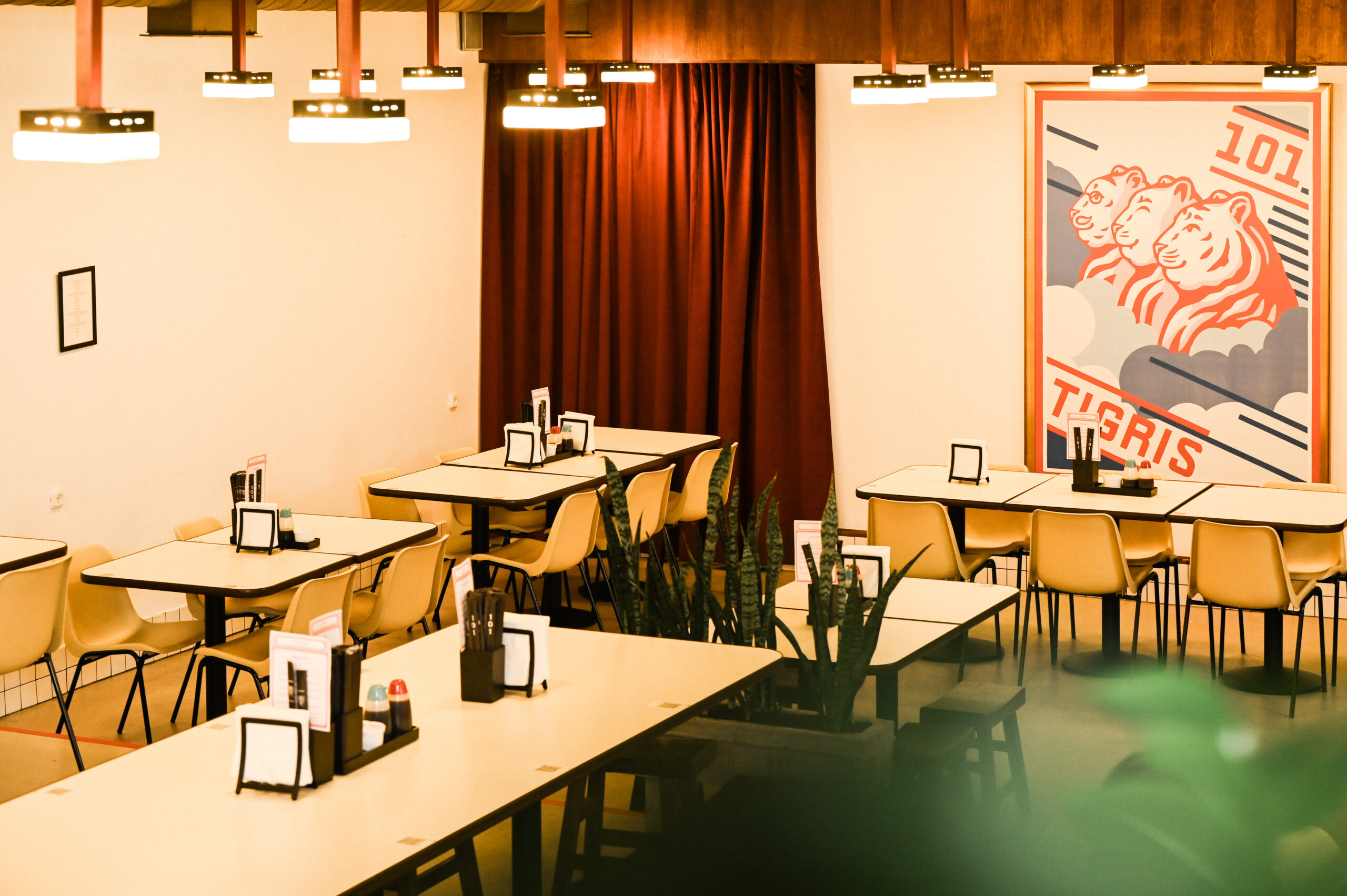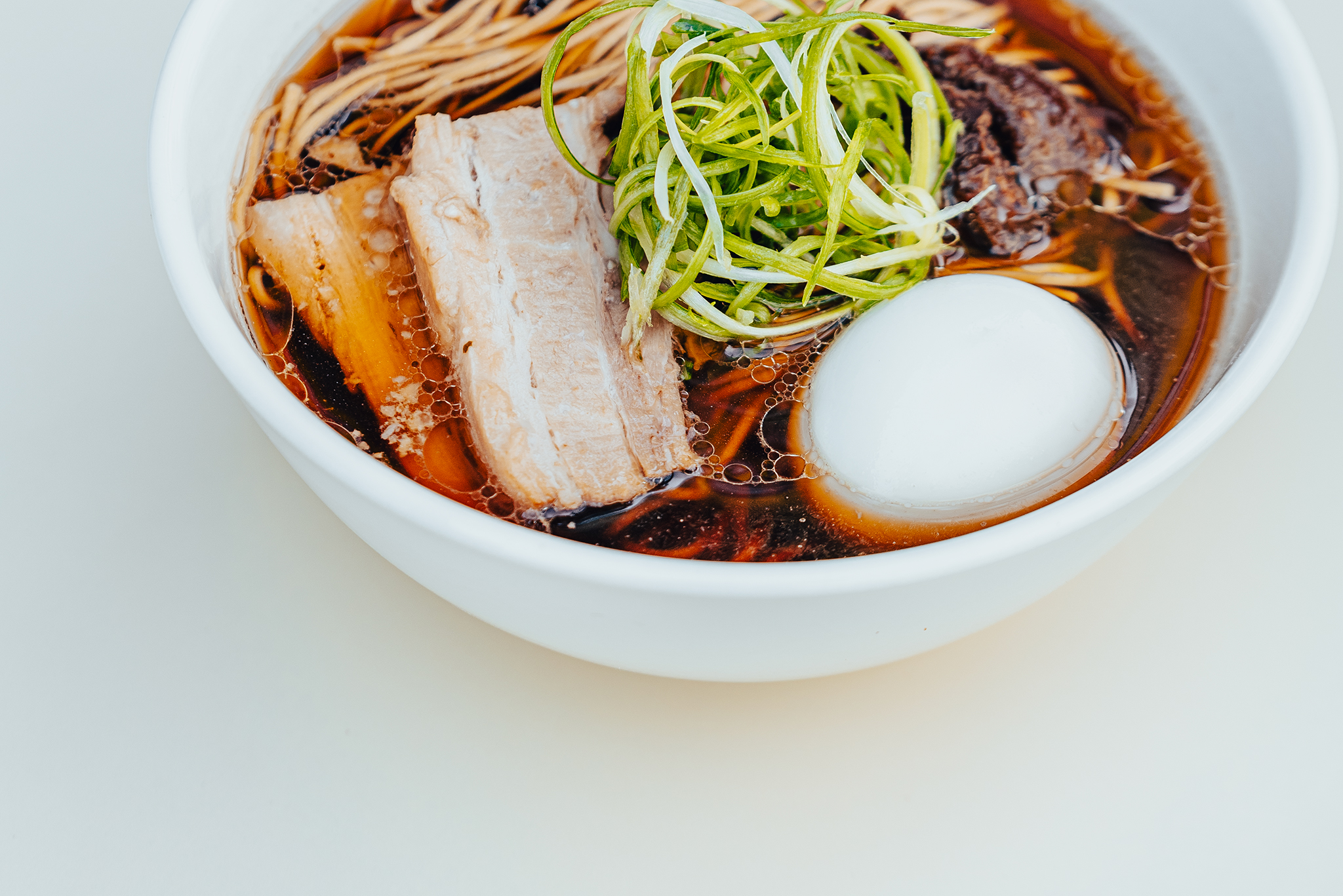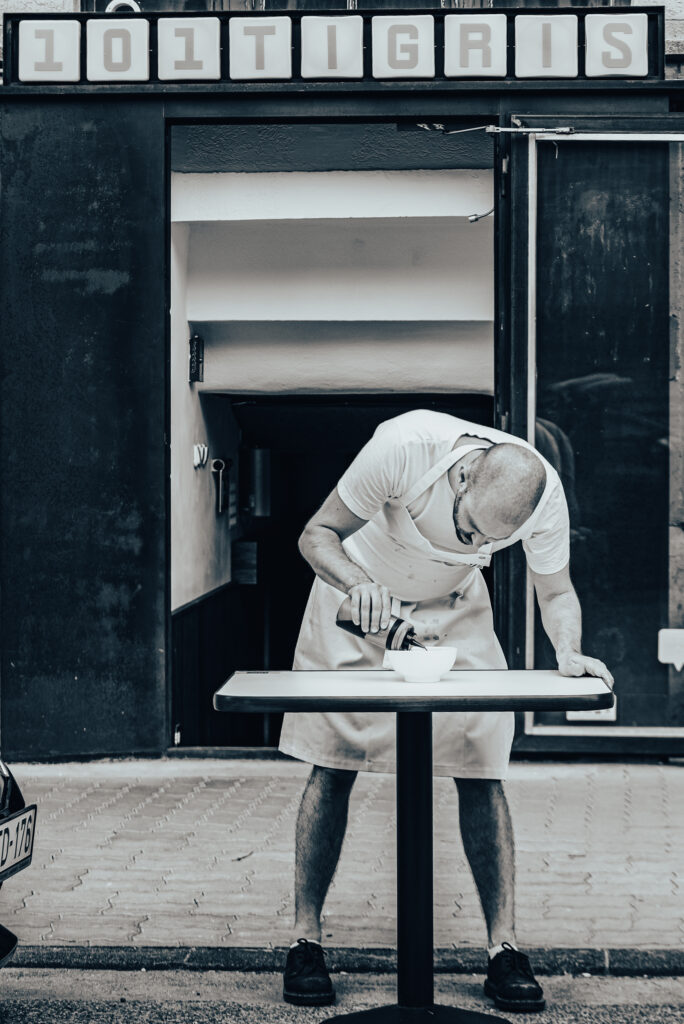What inspired 101 Bistro?
Our main source of inspiration is Taiwanese cuisine, which draws from countless trends: it contains Chinese and Japanese elements, but Western flavors are also present in their gastronomy. Chinese cuisine is very proud and does not mix Japanese elements into dishes, while the Japanese regularly adapt and freely reinterpret dishes of other cultures. Taiwanese cuisine is unique and special in this regard, because although it has its own flavors, it dares to experiment and combine cultures.
Lu Bowen, my business partner, grew up in China for a long time. He was looking for the kind of concept worth localizing, and I had previously worked in a Taiwanese restaurant abroad. We were both drawn to the fact that Taiwanese gastronomy emphasizes seasonality and complexity, and we brought that mentality to 101 Bistro, where we try to produce everything from local ingredients.
The seasonal ingredients in a Taiwanese restaurant are obviously different than in Budapest. How can this seasonality be preserved at home in a way that combines products found here with Taiwanese cuisine?
Seafood is an important part of Taiwanese cuisine, but the supply system does not allow us to use it sustainably. In addition, there are many Oriental ingredients that cannot be found, so we began to translate the seasonality of Taiwanese cuisine into our language. We talked to producers about seasonal vegetables and ingredients, and invested a lot of time experimenting with creative uses for local vegetables. Our cuisine cannot be described as fusion – we use local ingredients, but the framework and techniques used are Taiwanese. Playing with texture is a very important part of Taiwanese culinary art. There are many foods with a springy, chewy texture, which are also welcome on our list. This kind of experience is a real playground.
The Bistro recently got a new menu, can you tell us a little about it?
The summer and fall seasons allow the greatest freedom of movement in terms of raw materials, and the bistro menu is the most creative during this period. This year, we are working a lot with pumpkins and dandelions in Hokkaido. The tempura on the menu changes seasonally, and we regularly consult with producers about what’s available. It also contains shiso leaves, radish, and chanterelles. One of the most exciting things on the menu right now is the pumpkin ice cream, made by one of our sous chefs. So proud of the team who developed this special dish! We have recurring dishes, like steamed fish or sautéed cabbage, that return to the plate with different textures. The beauty of these dishes is that they are honest, there is no magic behind them. In addition, noodle soup is also back on our lunch menu.
The produce kitchen for 101 Bistro was located at 101 Degla, which opened this year. How did the farmer’s kitchen turn into a restaurant?
As the bistro expanded, the kitchen could no longer handle the tasks. We did not have enough capacity and our resources were limited. We have many dishes, such as stocks or sauces, that we prepare for eight to ten hours and require supervision. These are containers with a capacity of several hundred liters and require a lot of space. In addition, the demand for bao has increased so much that the bistro’s kitchen can no longer handle the quantity ordered. Operations requiring longer preparation were moved to Site 101 Tigris. Over time, we realized that this place had much more potential than just being a kitchen for producers, and we began designing the concept for 101 Tigris. It took a lot of preparation and thought before the final result came out, but it was a great adventure.
How different is the 101 Degla concept from the 101 Bistro concept?
The two worlds are completely different. The bistro is experimental in terms of ingredients and technology, while 101 Tigris is more conservative. The goal was to create a place that was easy to understand, comfortable, fast and affordable, translating Asian cooking to Hungarian guests in an easy and understandable way. We have prepared the menu accordingly, with noodle soup playing the main role.
At Tigris 101 Kitchen, the goal was also to prepare everything with local ingredients, as well as incorporating Asian elements into Hungarian cuisine. Fermented bamboo plays an important role in the world of Asian soups, but we had to abandon it quickly, because we had to travel eight to ten thousand kilometers to get this one product. Bamboo has been replaced by kohlrabi made using Asian techniques. We tried familiar vegetables until they were able to show us a new, unknown face.
Soup 101 Tigris also follows this concept – Our chicken soup is a bridge between the world of Japanese ramen and Sunday chicken soup. It has the elements that make people love chicken soup, but with a twist – This way the food will have its own accent. This kind of creative thinking is an eternal source of inspiration. Our goal with Degla was to open up to a broader customer base.
In Tigris 101, pasta plays the main role – but what kind of pasta do you use?
We have our own pasta, which we make fresh every day. This job requires a whole person, and about 200 kilograms of dough are made per week, which is an amazing amount. We experimented with preparing the dough for several months until we achieved the quality we wanted. We researched how Chinese noodles work and realized that the Asian noodle recipes available don’t necessarily work with European flour, simply because European flour is made for a different purpose than Asian flour. Europeans like to feel the taste of noodles, while in Taiwanese and other Eastern cultures, texture is the focus. There’s also a term for this, “QQ,” which stands for a springy, chewy texture. We tried to achieve this consistency, and in the end we succeeded. By the way, we use Germeli flour.
What are your plans for the future?
Recently, an irresistible opportunity presented itself. My business partner Le Bowen’s first restaurant was Ramenka on Casinzi Street, but when he moved to China for a while, he sold his local business. Now the space is vacant, so 101 Bistro and 101 Tigris will soon have a little brother, which we have named 101 Neo – which also means a new beginning. Since this was Boyin’s first project, we kept the furniture elements, but burned all the wood inlays black to give a good interpretation of the fresh start. At 101 Neo, we’ll be combining the bistro’s lunch menu with 101 Tigris’ repertoire, and adding baos. Here too, the focus will be on speed, smoothness and quality for the money. We will open in November, it will be exciting, and the tourist area will offer us new challenges.
After many trips abroad and gaining experience, what is it like working in Hungary now from the perspective of a few years? How open are people to Asian flavours?
When I went to England, I had very few professional contacts in Hungary, and I started building my network in London. In another country, of course, the profession is different, and people have a different mentality. When I came back, I had to improve a lot and adapt to the home crowd. I put a lot of thought into cooking and what people like, but that has been replaced by practice and the guests themselves. I do a lot of training for local audiences.
I’m always interested to know what elements have already been clearly incorporated into local gastronomy. These are the marine and freshwater things I would like to introduce to the locals. When we were kids, eating fish wasn’t part of the average meal, and until I was 20-22, I didn’t eat anything that came from water either – I realized how exciting the world out there was. If early experiences are excluded, not only can we push the public into deeper waters, we must gradually introduce them to the world of seafood. Of course, for this to work, the supply chain must also evolve internally.
With 101 Bistro and 101 Degla, we have taken many steps in order to provide the local audience with exciting and new flavours. The bistro will continue to be a more experimental and adventurous venue, and 101 Tigris will play a key role in the daily dining offering. I like that the clientele is very homogeneous and very different people visit us to eat.
the pictures: David Horbaczy














































